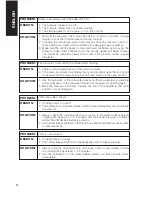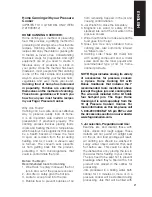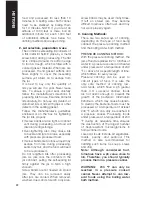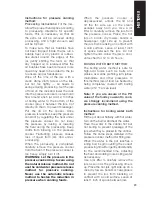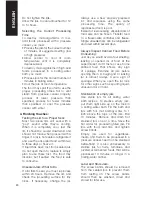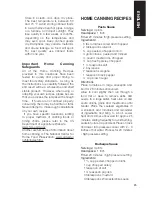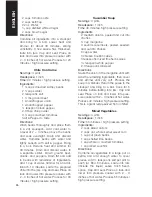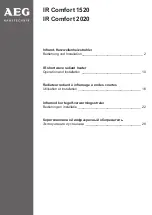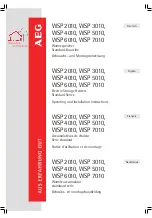
22
food and processed for less than 10
minutes in a boiling water bath canner
need to be sterilized by boiling them
for 10 minutes. NOTE: If you are at an
altitude of 1000 feet or more, boil an
additional minute for each 1000 feet
of additional altitude. See below for
canning methods and recipe timing.
2. Lid selection, preparation & use
The common self-sealing lid consists of
a flat metal lid held in place by a metal
screw band during processing. The flat
lid is crimped around its bottom edge
to form a trough, which is filled with a
colored gasket material. When jars are
processed, the lid gasket softens and
flows slightly to cover the jar-sealing
surface, yet allows air to escape from
the jar.
It is best to buy only the quantity of
lids you will use in a year. Never reuse
lids. To ensure a good seal, carefully
follow the manufacturer’s directions in
preparing lids for use. Examine all metal
lids carefully. Do not use old, dented, or
deformed lids or lids with gaps or other
defects in the sealing gasket.
Follow the manufacturer’s guidelines
enclosed or on the box for tightening
the jar lids properly.
• If screw bands are too tight, air cannot
vent during processing, and food will
discolor during storage.
• Over-tightening also may cause lids
to buckle and jars to break, especially
with pressure-processed food.
• If screw bands are too loose, liquid may
escape from jars during processing,
seals may fail, and the food will need
to be reprocessed.
Do not retighten lids after processing
jars. As jars cool, the contents in the
jar contract, pulling the self-sealing lid
firmly against the jar to form a high
vacuum.
Screw bands are not needed on stored
jars. They can be removed easily
after jars are cooled. When removed,
washed, dried, and stored in a dry area,
screw bands may be used many times.
If left on stored jars, they become
difficult to remove, often rust, and may
not work properly again.
3. Canning Methods:
There are two safe ways of canning,
depending on the type of food being
canned: the pressure canning method
and the boiling water bath method.
PRESSURE CANNING METHOD:
With the pressure canning method, the
jars of food are placed in 2 to 3 inches of
water in a pressure cooker and heated
under pressure at a temperature of 240
°F or above for a specific length of time,
which differs for every recipe.
Pressure canning can be used to
can all types of food. It is also the
only safe method of canning low-
acid foods, which have a ph greater
than 4.6. Low-acid canned foods
are not acidic enough to prevent the
growth of the bacterium
Clostridium
botulinum
, which may cause botulism.
To destroy the bacteria, foods must be
processed at a temperature of at least
240 ºF, which can only be reached in
a pressure cooker. Processing foods
under pressure at a temperature of 240
ºF during an adequate time ensures
the destruction of the largest number
of heat-resistant microorganisms in
home-canned foods.
Low-acid foods include all vegetables,
meats, poultry, and seafood. This
method is also recommended for
canning such items as soups, stews
and chili.
Note: Although considered fruit,
tomatoes have a ph value close to
4.6. Therefore, you should typically
process them in a pressure canner.
WARNING: 240 ºF can only be
reached in a pressure cooker/
canner. Never attempt to can low-
acid foods using the boiling water
bath method.
ENGLISH













